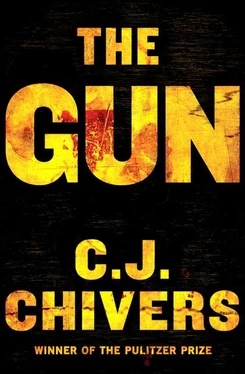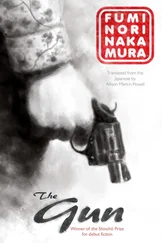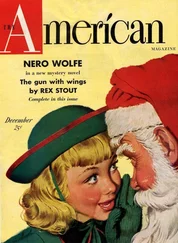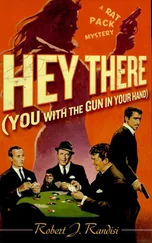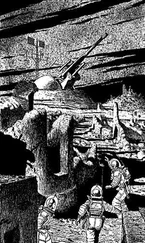Manufacturing began in supposed secrecy at a French arsenal in Meudon, outside Paris. The secret could not be kept. French newspapers crowed about a devastating weapon soon to be unveiled, one that would fell the Prussians in rows. Inside European martial circles, officers’ clubs awaited the result, even as they shared the details of the emperor’s hushed work. “The secret is so jealously guarded by our friends and allies, that it would be an ill return for much official kindness and hospitality shown me, to publish that which after all I have unofficially and indeed almost accidentally learned,” declared one British major to an assembly of officers in London. The speaker, G. V. Fosbery of Her Majesty’s Bengal Staff Corps, was an early proponent of rapid-fire arms. On the subject of the mitrailleuse, he opted for both disclosure and titillation. The guns, he said, actually seemed to fire about 300 shots a minute (not the 444 proposed), and the French had applied themselves to learning how to fight with them. “The weapon is a most formidable one, it is admirably constructed, and equipped for service, and will, I doubt not, produce, if brought into action, effects almost as astonishing as those of the breechloader, and cause a general impatience to be possessed of the new arm.” The officers did not have to wait long for the gun to be revealed. Napoleon III declared war on Prussia in 1870. The huge guns—each weighed nearly three thousand pounds—were towed toward the opening battles hidden under tarps, along with a few Gatlings. In this war, France expected its rapid-fire weapons to be decisive.
When Prussian and French soldiers met in the countryside, the outcomes were inconsistent. There were moments when rapid-fire arms were extremely effective, including a one-sided engagement captured in an account by a correspondent for the London Journal. The writer described the effect on a distant infantry formation that was caught in the open, and suffered almost exactly the effect predicted in the 1868 tests in Vienna:
A column of troops appeared in the valley below us, coming from the right—a mere dark streak upon the white snow; but no one in the battery could tell whether they were friends or foes, and the commander hesitated about opening fire. But now an aide-de-camp came dashing down the hill, with orders for us to pound at them at once—a French journalist having, it seems, discovered them to be enemies when the general and all his staff were as puzzled as ourselves. Rr-rr-a go our Gatlings, the deadly hail of bullets crashes into the thick of them, and slowly back into the woods the dark mass retires, leaving however, a track of black dots upon the white snow behind it. 14
This was a minor episode in a war with more than two hundred thousand conventional combatants, and might not be expected to have been either widely witnessed or grist for extrapolation among the tacticians of the time. Another event, however, built on it. At the battle of Mars-la-Tour, in August 1870, about thirty thousand Germans encountered a retreating French force roughly four times their size. The battle would be a rout, with the outnumbered Germans forcing the already disoriented French deeper into indecision and withdrawal, and contributing to the capture of the French emperor and the Prussians’ march on Paris. Lost in the scale of fighting and the political significance of the outcome was the riddling of the Thirty-eighth Prussian Infantry Brigade, which, backed by artillery, attacked a French division and its mitrailleurs. The official report presaged some of the accounts that would later circulate in World War I. It stated:
…that these troops encountered a murderous infantry and machine-gun fire, and were obliged to fall back, their losses “amounting almost to annihilation;” that cavalry attempted to protect the shattered remnant of the brigade, “but that on account of the violent mitrailleuse fire, the leader was unable to deliver home his attack.” The 38th Brigade (5 battalions) went into action with 95 officers, 4,546 men and sustained the loss of 72 officers and 2,542 men killed, wounded and prisoners. The proportion of killed to wounded being as 3 to 4. 15
These accounts, for all that they suggested, did not receive wide circulation in the war’s immediate aftermath, in part because two problems emerged in the Franco-Prussian War that the promoters of the mitrailleuse had not anticipated. First, no matter Major Fosbery’s insistence to the contrary, the weapons were so new that the French had not yet matched the technology with tactics covering how to use them. They were usually badly employed. The second problem was that the Prussians arrived on the battlefield equipped with an innovative weapon of their own: Krupp’s breech-loading artillery, which was made not of iron, as most artillery to that point had been, but of steel. The strength of steel made Krupp field pieces more powerful and accurate than any artillery yet seen, and their breech-loading quality meant they could be fired more rapidly and with gun crews at less risk as they reloaded. The French mitrailleurs, often setting up in the open and with scant idea how best to use their newly issued weapons, were easy marks for the Prussian artillerists, who dropped shells on them from beyond the Frenchmen’s range, silencing one team after another. The abandoned weapons littered fields and roads, war trophies that the Prussians and their allies from across the German empire did not want. “The Germans took something like 600 of the French mitrailleurs,” noted one British officer in attendance with the German command, “and never attempted to make the slightest use of them.” 16
Victories received more coverage than defeats. Set against the rout of the French army, the Germans’ indifference to the veritable stockpile of rapid-fire guns was the sort of assessment shared among correspondents and military attachés, who focused on instances in which the French weapons failed to work rather than on those in which they did. The Franco-Prussian War, which the French had hoped would usher in the era of battery arms, had the opposite effect. Skepticism, even hostility, to the idea of machine guns soared among the traditionalists, who, in their own view, had been right to resist the weapons from the beginning. Informed of the French military’s fate after putting its faith in rapid-fire arms, a British military committee in 1871 saw that the Gatling could be useful for fort or coastal defense. But it sniffed at the Gatling’s utility in continental warfare: “The committee are decidedly averse to the employment of mitrailleurs for advancing with infantry, or indeed attacking in any form, except when the enemy is provided with an inferior artillery or no artillery at all.” 17
By now, however, enough weapons had been shown to enough military officers, and distributed to enough armies and navies, that given time even the most stupid of military men would eventually grasp just how well rapid-fire arms could kill. Notwithstanding the French debacle, a few officers in the British service continued advocating their use. The British government had ordered a Gatling gun for tests in 1869, 18beginning the process that would see British expeditions depart with Gatlings on their vessels and assign them to troops on colonial duty. Gatling and his sales agents kept lobbying, and test guns were subjected to performance trials in Shoeburyness, England. At a range of six hundred yards, in two minutes’ time, a Gatling gun’s bullets all but ventilated its target, peppering it with 522 hits. This was more than the shrapnel holes produced by two British artillery pieces (283 and 142 each) or the impacts in a target fired upon by a Montigny mitrailleuse (127). In three contests between weapons firing from unknown ranges at 134 man-sized dummies spread about a field, the results were similar. Each time, no weapon was able to hit the dummies with the speed or frequency of the Gatling gun. 19William H. Talbott, the company president, declared that the trials were “no ordinary triumph,” 20and was hopeful that the right people had been converted to the company’s cause. “The Gatling gun behaved elegantly,” he wrote. “The Duke of Cambridge said in my presence ‘It was a most powerful and wonderful gun.’” 21
Читать дальше
